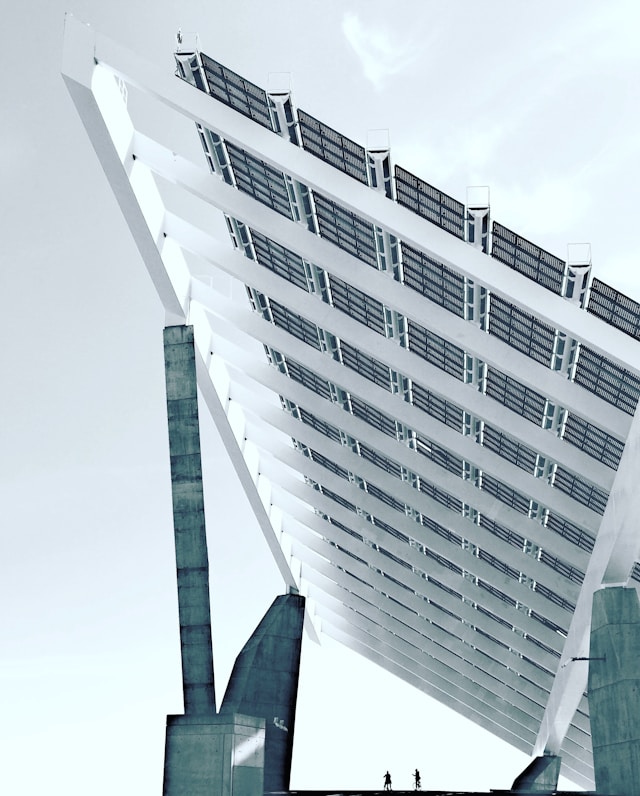Our blog is dedicated to the exploration of renewable energy and how it is integrated in Europe. Still, perhaps not all people know what renewable energy is or how the different types work. In order to understand the present and future integration of renewable energy, it would come in handy to first find out how renewable energy operates.
This is why this article will discuss popular types of renewable energy sources and explain in detail the way they work. We will also talk about the advantages and disadvantages of every type of renewable energy sources.
What is Renewable Energy
To put it simply, renewable energy is energy generated from natural sources which are replenished at a higher rate than they are consumed. If you were to compare it to non-renewable energy like fossil fuels, fossil fuels take millions of years to form, so our consumption does not allow them to replenish fast enough.
Furthermore, many types of renewable energy sources do not even require replenishment as they represent infinite sources, think of solar or wind energy. Thereby, renewable energy can help us immensely once we milk dry our natural resources such as coal and natural gas.
Different Types of Renewable Energy Sources and Their Operation
In this section, we will discuss popular types of renewable energy sources and explain how each one works:
- Solar energy
- Wind energy
- Hydroelectric energy
Solar Energy
Solar energy is derived from the Sun, and it is thus an infinite source of energy (that is, of course, until the Sun becomes a giant and consumes us in a few billion years). Energy from the Sun is sourced via solar panels which absorb sunlight through their PV (photovoltaic) cells whereas solar energy creates electrical charges moving as a result of the internal electrical field in the cells, causing a flow of electricity.
Solar energy can be utilised by governments, as well as businesses and private homes. The upkeep is easy and the energy bill of people and businesses is really low. Additionally, homes with solar panels can apply for credits and their value can increase.
Still, solar energy is not perfect.
Firstly, the amount of capturable sunlight varies based on location and season. Secondly, solar energy is good for producing electricity in the moment of absorption but storing the produced electricity is challenging. Lastly, solar panels require a lot of space, they are expensive, and while their shell life is short (25-30 years), they take many years to biodegrade.
Wind Energy
Wind energy is derived from the power of the wind. The way wind energy works is by utilising wind turbines whose blades are turned by moving air, thereby turning kinetic energy (motion) into electrical energy.
Wind energy is the most popular type of renewable energy in the world. China leads the list for most TWh (terawatt-hours) generated through wind (2098.46 TWh), while Denmark leads in highest percentage of the wind energy used in a national grid (55%). Wind energy is harnessed by national governments rather than private businesses and residences for obvious reasons.
Wind energy can be a more reliable source of energy than the one harnessed by the Sun because it wind blows all the time and it takes little to set the turbines in motion. Additionally, the conversion rate of wind motion to electric power is really high (between 40-50%). Finally, wind turbines don’t require as much space as solar panels.
Some issues with wind energy include lack of space for wind turbines, threat to wildlife, the unpredictability of its power source and the decomposition time of wind turbines.
However, wind power has already proven advantageous for many countries judging by the success of China, Denmark, Lithuania and Ireland which provide a high percentage of their power via wind power.
Hydroelectric Energy
Hydroelectric energy is harnessed from water sources, mainly rivers. Power is generated through the motion of water, so it works in a similar principle to wind energy which turns kinetic energy into electrical energy. Again, the building of hydroelectric facilities is reserved to national governments.
Hydroelectric dams are usually built around big rivers with constant flow (as opposed to rivers which go dry during certain seasons). Hydropower plants use pipes through which water flows and its motion pushes against and turns the blades of a turbine which in its turn spins and powers a generator that produces electricity.
Some of the advantages of hydroelectric energy include the fact that water energy is clean (all elements are biodegradable and water is naturally clean), the plants can easily store generated energy and have the ability to reach maximum electrical output almost immediately, and lastly, dams can last for centuries with minimal repairs.
Still, hydroelectric energy also has some flaws. Hydroelectric dams cannot be built everywhere and the initial cost is high. Additionally, they are susceptible to droughts and there’s always the risk of flooding.
Conclusion
Renewable energy is believed by many to be the future of energy generation. There are many advantages to the different types of renewable energy, and while there are also flaws, it might be so that the quality of the technology improves in the future to minimise the cons of using the various types of renewable energy sources.

